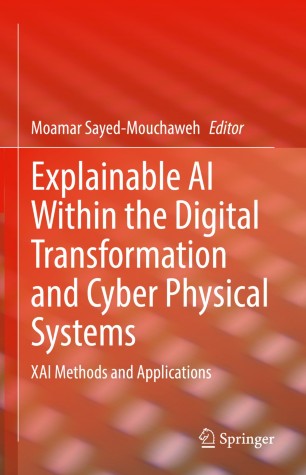Ethical/legal framework for explanation
5
LINE
Explainability is one of the most important ethical and legal values identified by EU regulations (GDPR, AI act). However, when we design a trustworthy AI System it is important to take into consideration also the other ethical and legal values such as privacy, fairness, safety, robustness, etc. This requires analyzing the interplay among the different values and understanding whether they are in contrast or not.
In this direction, the work of Line 5 has started the investigation of the interplay between explainability and privacy, and explainability and fairness under different viewpoints. In particular, the research of this line tries to answer the following questions:- Can explanation methods, introducing a level of transparency in the whole decision process, might jeopardize individual privacy of people represented in the training data?
- Can explanation methods help in understanding the reason for possible ethical risks associated with the use of AI systems (e.g., privacy violations and biased behaviors)?
- Can explanation methods be fundamental for discovering other ethical issues like unfair behavior of AI systems?
Concerning the use of explainability as a means for discovering unfair behaviors, in [MG2021], we propose FairShades, a model-agnostic approach for auditing the outcomes of abusive language detection systems. FairShades combines explainability and fairness evaluation within a proactive pipeline to identify unintended biases and sensitive categories toward which the black box model under assessment is most discriminative. It is a task-specific approach for abusive language detection: it can be used to test the fairness of any abusive language detection system working on any textual dataset. However, its ideal application is on sentences containing protected identities, i.e., expressions referring to nationality, gender, etc., as the primary scope is to uncover biases and not explain the reasons for the prediction.
Publications
10.
[MM2023]Marchiori Manerba Marta, Morini Virginia (2023) - Machine Learning and Principles and Practice of Knowledge Discovery in Databases. ECML PKDD 2022. Communications in Computer and Information Science, vol 1752. In Machine Learning and Principles and Practice of Knowledge Discovery in Databases
Abstract
Biases can arise and be introduced during each phase of a supervised learning pipeline, eventually leading to harm. Within the task of automatic abusive language detection, this matter becomes particularly severe since unintended bias towards sensitive topics such as gender, sexual orientation, or ethnicity can harm underrepresented groups. The role of the datasets used to train these models is crucial to address these challenges. In this contribution, we investigate whether explainability methods can expose racial dialect bias attested within a popular dataset for abusive language detection. Through preliminary experiments, we found that pure explainability techniques cannot effectively uncover biases within the dataset under analysis: the rooted stereotypes are often more implicit and complex to retrieve.
17.
[NMG2022]Naretto Francesca, Monreale Anna, Giannotti Fosca (2022) - 2022 IEEE 4th International Conference on Cognitive Machine Intelligence (CogMI). In IEEE International Conference on Cognitive Machine Intelligence (CogMI)
Abstract
In recent years we are witnessing the diffusion of AI systems based on powerful Machine Learning models which find application in many critical contexts such as medicine, financial market and credit scoring. In such a context it is particularly important to design Trustworthy AI systems while guaranteeing transparency, with respect to their decision reasoning and privacy protection. Although many works in the literature addressed the lack of transparency and the risk of privacy exposure of Machine Learning models, the privacy risks of explainers have not been appropriately studied. This paper presents a methodology for evaluating the privacy exposure raised by interpretable global explainers able to imitate the original black-box classifier. Our methodology exploits the well-known Membership Inference Attack. The experimental results highlight that global explainers based on interpretable trees lead to an increase in privacy exposure.
20.
[NMG2022]Francesca Naretto, Anna Monreale, Fosca Giannotti (2022) - Proceedings of the First International Conference on Hybrid Human-Artificial Intelligence. In Frontiers in Artificial Intelligence and Applications
Abstract
nan
Research Line 5
25.
[MG2022]Marta Marchiori Manerba, Guidotti Riccardo (2022) - Conference on AI, Ethics, and Society (AIES 2022). In Proceedings of the 2022 AAAI/ACM Conference on AI, Ethics, and Society (AIES'22)
Abstract
During each stage of a dataset creation and development process, harmful biases can be accidentally introduced, leading to models that perpetuates marginalization and discrimination of minorities, as the role of the data used during the training is critical. We propose an evaluation framework that investigates the impact on classification and explainability of bias mitigation preprocessing techniques used to assess data imbalances concerning minorities' representativeness and mitigate the skewed distributions discovered. Our evaluation focuses on assessing fairness, explainability and performance metrics. We analyze the behavior of local model-agnostic explainers on the original and mitigated datasets to examine whether the proxy models learned by the explainability techniques to mimic the black-boxes disproportionately rely on sensitive attributes, demonstrating biases rooted in the explainers. We conduct several experiments about known biased datasets to demonstrate our proposal’s novelty and effectiveness for evaluation and bias detection purposes.
Research Line 1▪5
31.
[CDF2021]Chatila Raja, Dignum Virginia, Fisher Michael, Giannotti Fosca, Morik Katharina, Russell Stuart, Yeung Karen (2022) - Reflections on Artificial Intelligence for Humanity. In Lecture Notes in Computer Science,
Abstract
Modern AI systems have become of widespread use in almost all sectors with a strong impact on our society. However, the very methods on which they rely, based on Machine Learning techniques for processing data to predict outcomes and to make decisions, are opaque, prone to bias and may produce wrong answers. Objective functions optimized in learning systems are not guaranteed to align with the values that motivated their definition. Properties such as transparency, verifiability, explainability, security, technical robustness and safety, are key to build operational governance frameworks, so that to make AI systems justifiably trustworthy and to align their development and use with human rights and values.
34.
[MG2021]Marchiori Manerba Marta, Guidotti Riccardo (2021) - Third Conference on Cognitive Machine Intelligence (COGMI) 2021. In 2021 IEEE Third International Conference on Cognitive Machine Intelligence (CogMI)
Abstract
At every stage of a supervised learning process, harmful biases can arise and be inadvertently introduced, ultimately leading to marginalization, discrimination, and abuse towards minorities. This phenomenon becomes particularly impactful in the sensitive real-world context of abusive language detection systems, where non-discrimination is difficult to assess. In addition, given the opaqueness of their internal behavior, the dynamics leading a model to a certain decision are often not clear nor accountable, and significant problems of trust could emerge. A robust value-oriented evaluation of models' fairness is therefore necessary. In this paper, we present FairShades, a model-agnostic approach for auditing the outcomes of abusive language detection systems. Combining explainability and fairness evaluation, FairShades can identify unintended biases and sensitive categories towards which models are most discriminative. This objective is pursued through the auditing of meaningful counterfactuals generated within CheckList framework. We conduct several experiments on BERT-based models to demonstrate our proposal's novelty and effectiveness for unmasking biases.
35.
[GMP2021]
Guidotti Riccardo, Monreale Anna, Pedreschi Dino, Giannotti Fosca (2021) - Explainable AI Within the Digital Transformation and Cyber Physical Systems (pp. 9-31)
Abstract
This book presents Explainable Artificial Intelligence (XAI), which aims at producing explainable models that enable human users to understand and appropriately trust the obtained results. The authors discuss the challenges involved in making machine learning-based AI explainable. Firstly, that the explanations must be adapted to different stakeholders (end-users, policy makers, industries, utilities etc.) with different levels of technical knowledge (managers, engineers, technicians, etc.) in different application domains. Secondly, that it is important to develop an evaluation framework and standards in order to measure the effectiveness of the provided explanations at the human and the technical levels. This book gathers research contributions aiming at the development and/or the use of XAI techniques in order to address the aforementioned challenges in different applications such as healthcare, finance, cybersecurity, and document summarization. It allows highlighting the benefits and requirements of using explainable models in different application domains in order to provide guidance to readers to select the most adapted models to their specified problem and conditions. Includes recent developments of the use of Explainable Artificial Intelligence (XAI) in order to address the challenges of digital transition and cyber-physical systems; Provides a textual scientific description of the use of XAI in order to address the challenges of digital transition and cyber-physical systems; Presents examples and case studies in order to increase transparency and understanding of the methodological concepts.
46.
[NPN2020]Naretto Francesca, Pellungrini Roberto, Nardini Franco Maria, Giannotti Fosca (2021) - ECML PKDD 2020 Workshops. In ECML PKDD 2020 Workshops
Abstract
The analysis of privacy risk for mobility data is a fundamental part of any privacy-aware process based on such data. Mobility data are highly sensitive. Therefore, the correct identification of the privacy risk before releasing the data to the public is of utmost importance. However, existing privacy risk assessment frameworks have high computational complexity. To tackle these issues, some recent work proposed a solution based on classification approaches to predict privacy risk using mobility features extracted from the data. In this paper, we propose an improvement of this approach by applying long short-term memory (LSTM) neural networks to predict the privacy risk directly from original mobility data. We empirically evaluate privacy risk on real data by applying our LSTM-based approach. Results show that our proposed method based on a LSTM network is effective in predicting the privacy risk with results in terms of F1 of up to 0.91. Moreover, to explain the predictions of our model, we employ a state-of-the-art explanation algorithm, Shap. We explore the resulting explanation, showing how it is possible to provide effective predictions while explaining them to the end-user.
47.
[NPM2020]Naretto Francesca, Pellungrini Roberto, Monreale Anna, Nardini Franco Maria, Musolesi Mirco (2021) - Discovery Science. In Discovery Science Conference
Abstract
Mobility data is a proxy of different social dynamics and its analysis enables a wide range of user services. Unfortunately, mobility data are very sensitive because the sharing of people’s whereabouts may arise serious privacy concerns. Existing frameworks for privacy risk assessment provide tools to identify and measure privacy risks, but they often (i) have high computational complexity; and (ii) are not able to provide users with a justification of the reported risks. In this paper, we propose expert, a new framework for the prediction and explanation of privacy risk on mobility data. We empirically evaluate privacy risk on real data, simulating a privacy attack with a state-of-the-art privacy risk assessment framework. We then extract individual mobility profiles from the data for predicting their risk. We compare the performance of several machine learning algorithms in order to identify the best approach for our task. Finally, we show how it is possible to explain privacy risk prediction on real data, using two algorithms: Shap, a feature importance-based method and Lore, a rule-based method. Overall, expert is able to provide a user with the privacy risk and an explanation of the risk itself. The experiments show excellent performance for the prediction task.
61.
[M2020]Monreale Anna (2020) - DPCE Online, [S.l.], v. 44, n. 3. In DPCE Online, [S.l.], v. 44, n. 3, oct. 2020. ISSN 2037-6677
Abstract
nan
Research Line 5
Researchers working on this line

Riccardo
Guidotti
University of Pisa
R. line 1 ▪ 3 ▪ 4 ▪ 5

Franco
Turini
University of Pisa
R. line 1 ▪ 2 ▪ 5

Salvo
Rinzivillo
ISTI - CNR Pisa
R. line 1 ▪ 3 ▪ 4 ▪ 5

Andrea
Beretta
ISTI - CNR Pisa
R. line 1 ▪ 4 ▪ 5

Anna
Monreale
University of Pisa
R. line 1 ▪ 4 ▪ 5

Cecilia
Panigutti
Scuola Normale
R. line 1 ▪ 4 ▪ 5

Roberto
Pellungrini
University of Pisa
R. line 5

Francesca
Naretto
Scuola Normale
R. line 1 ▪ 3 ▪ 4 ▪ 5

Marta
Marchiori Manerba
University of Pisa
R. line 1 ▪ 2 ▪ 5

Fabio Michele
Russo
University of Pisa
R. line 3 ▪ 5

Clara
Punzi
Scuola Normale
R. line 1 ▪ 5

Andrea
Pugnana
Scuola Normale
R. line 2